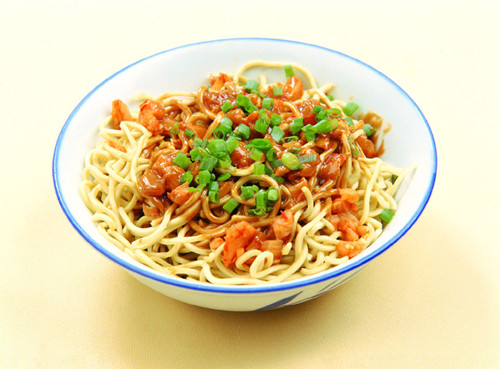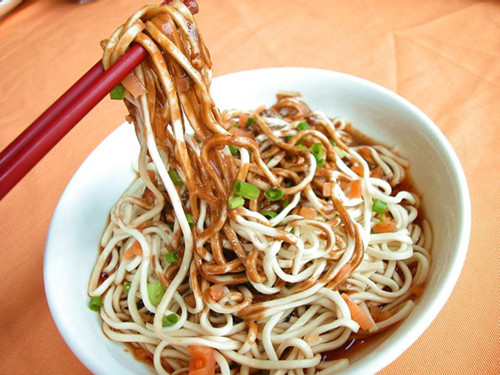Hot Dry Noodles
- Source: Hubei Provincial People's Government
- 08/18/2022 14:40
- 0 304

Reganmian noodles contain sodium carbonate. They offer a special taste because they are dried and then boiled, and served with fragrant sesame oil and sesame paste. The noodles are usually topped with spring onions.

Hot dry noodles are an essential part of the Wuhan diet, eaten by almost everyone daily at breakfast time. It is what Wuhan people grow up eating.
The hot dry noodles, also known as "reganmian", is a traditional Wuhan dish from the capital city of Hubei province in Central China. The noodles have enjoyed a long history within Chinese food culture spanning 80 years.
It was said that in early 1930s, there was a person named Libao in Hankou District of Wuhan, who sold Cool Power Noodles and Noodles in Soup. One day, it was hot and there were a lot of noodles left, he was afraid the noodles became mold and turned worse. So he boiled the noodles, took it out, dried it on the chopping board, he splashed sesame oil over noodles due to carelessness. A good idea came to his mind that Libao mixed and stirred noodles with sesame oil, then cooled it. The next day, his noodles were welcomed by customers, thus a new species of food came into being.
Reganmian restaurant s can be found throughout Wuhan as the noodles are popular with locals during every season of the year and eaten for breakfast, lunch, and dinner or for even just a snack.
Although the noodles are not difficult to make, making them well requires years of experience. Hot-dry noodle are made by cooking the fresh noodles mixed with sesame oil in boiling water, when the noodle has cooked and cooled, it becomes pliable. The noodles are then placed in boiling water again to be reheated and the process is repeated. After seasoning has been added, including spring onion and sauce, the hot-dry noodle is ready to be served.
Wuhan’s hot dry noodles are the most popular noodles in China, according to a ranking released by the Chinese Ministry of Commerce in 2013, followed by Beijing’s fried sauce noodles and Shanxi’s knife-shaved noodles.